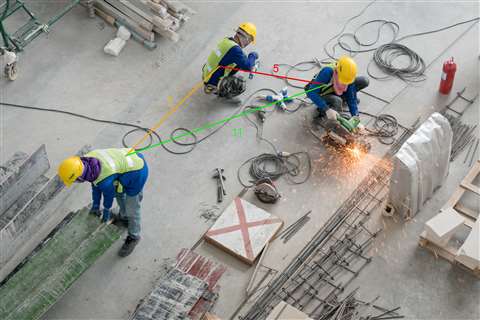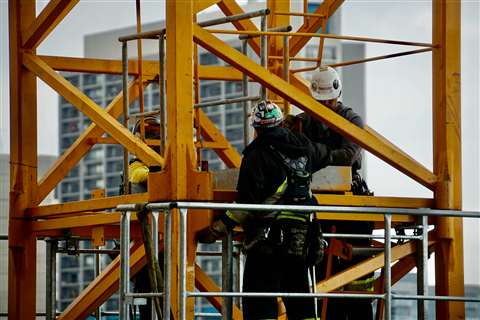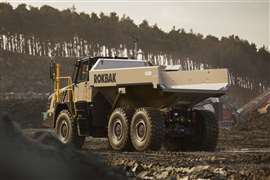Computer vision AI sees the way forward
29 July 2021
Salman Chaudhary, CEO at EmpiricAI, explains why computer vision AI offers a glimpse of the future of health & safety in the construction sector
 Artificial intelligence can be a huge asset in reducing instances of social distancing transgressions on site
Artificial intelligence can be a huge asset in reducing instances of social distancing transgressions on site
Construction remains one of the riskiest industries to work in and, generally, the larger the project, the greater the risk. All sites, though, have to deal with multiple sub-contractors, a need for extensive working at height, presence of moving vehicles and use of hot works, amongst others. All in all it makes for a dangerous workplace and one that is long overdue for technological intervention.
The UK’s HSE (Health & Safety Executive) found that 61,000 construction workers sustained non-fatal injuries in 2019/2020 and most of these were slip, trips and falls (26%). That accounts for around 2% of the entire construction workforce. In 2019/2020, the estimated economic cost of workplace injury and ill health in construction was £1.2 billion.
With similar trends across Europe, accidents and illness in the construction sector is costing businesses billions of pounds. In simple terms, there are still too many H&S incidents and if site managers carry on doing what they’ve always done, there is unlikely to be any significant improvement. However, an effective way of tackling the issue it to embrace technology; computer vision AI is able to deliver a step change where traditional approaches are achieving diminishing returns.
Computer vision AI
AI-powered computer vision is a technology that has the ability to make the single largest impact on workplace safety. Within the construction sector, anything that requires round the clock monitoring, or frequent manual inspections, or involves repetitive tasks, is ideally suited to computer vision AI (artificial intelligence).
Integrated into on site CCTV, computer vision AI carries out real-time monitoring and detection of any H&S non-compliance. This can range from monitoring social distancing/mask usage, correct deployment of PPE (for example, checking that safety harnesses are used), through to automatically monitoring skills cards on site. Immediate, configurable notifications and email alerts on any type of safety violation are built into computer vision systems, allowing prompt actions on ensuring the well-being of the workforce. Health and safety analytics built into the system show a range of visual prompts including hourly percentage violations, average distance between people, pictorial evidence of non-compliance, daily alerts and section-wise trends.
 The need to work at height is one of the occupational hazards of the construction industry
The need to work at height is one of the occupational hazards of the construction industry
Computer vision AI within the health & safety sphere works by feeding the platform with information about all the elements depicted in the image and which are relevant. The capabilities of AI mean that it ‘learns’ to identify the point of interest via Computer Vision, such as a safety harness, and will outperform even the most experienced health & safety professionals in identifying potential risks. Humans, will, of course, be the ultimate decision makers, meaning the technology is used as an augmented intelligence that is capable of raising alerts whilst relinquishing health & safety operatives from the monotonous task of collecting data from the workplace.
Collecting data is only part of the story. What happens to the data afterwards counts just as much. Our approach is to focus on simplicity of reporting to make it accessible to anyone in the business, so helping to engrain a health & safety culture at all levels.
Increasing marginal returns
There are still too many accidents in the construction sector, against a background of diminishing returns from traditional methods of approaching health & safety. In order to make a step change in results and address the unacceptable number of accidents on site, business owners and managers have to embrace new ways of doing things.
We have seen that computer vision AI is highly effective at improving health and safety by detecting, alerting and reporting breaches. It works best when it is designed and ‘trained’ to accomplish these specific tasks – the technology is now at a stage where it can teach machines to be better than humans in these areas, particularly for monotonous tasks.
The traditional approach to health and safety and risk management that relied on visual observation, an approach prone to human error, inconsistencies and distraction, will no longer be acceptable in a post-Covid world where the workforce demands higher standards of safety.
WorkSafe works out for contractorAn EmpiricAI customer recently deployed the company’s WorkSafe Analytics solution following a six-week pilot project. The KPIs were set to monitor staff mask usage improvement and social distancing requirements around Covid-19 requirements. It provided the Health & Safety managers with rapid and targeted insights into where the business could improve its already robust occupational health policies to reduce risk and avoid operational interruptions. Following the six-week pilot project, which began in November 2020, they recorded a multi-fold improvement in monitoring (spot checks versus computer vision) and witnessed more than an 80% reduction in Covid social distancing violations within the first four weeks of pilot deployment and a reduction of up to 90% in mask noncompliance towards the end of the pilot. |
To find out more about EmpiricAI and WorkSafe Analytics, visit: www.empiric.ai
STAY CONNECTED


Receive the information you need when you need it through our world-leading magazines, newsletters and daily briefings.
CONNECT WITH THE TEAM











